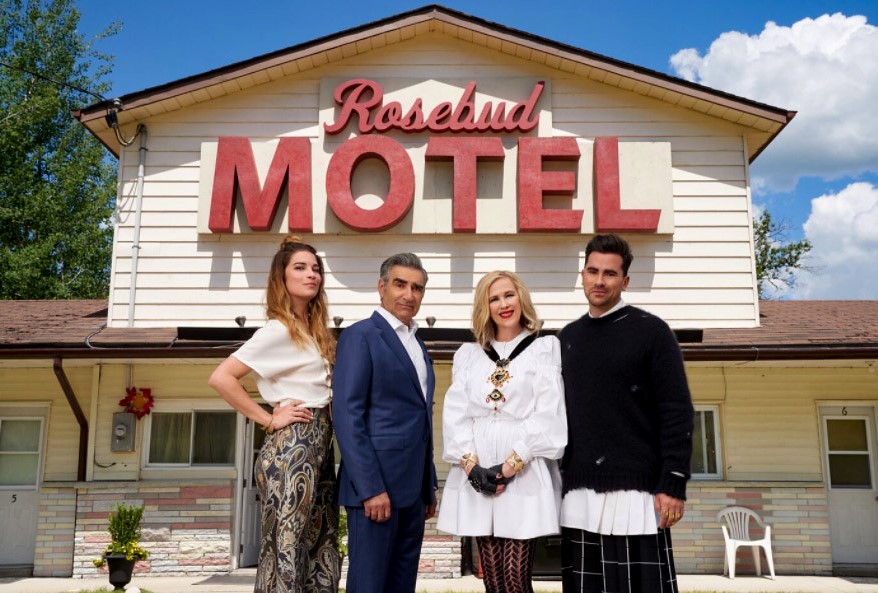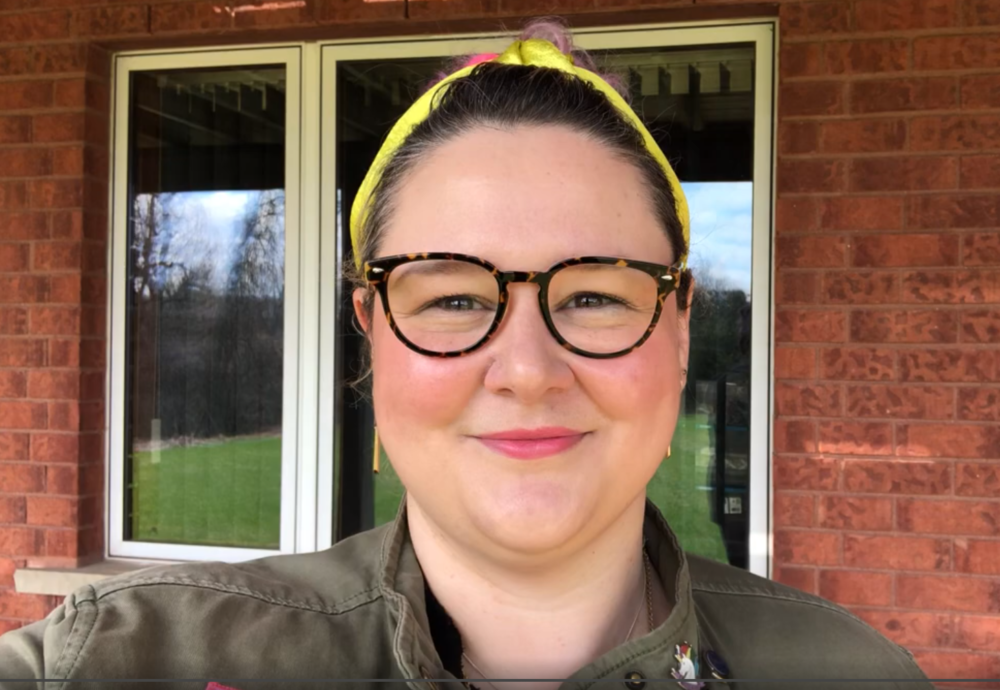
This article is republished from The Conversation under a Creative Commons licence. Read the original article.
With 15 Emmy nominations in 2020, Schitt’s Creek has captured the popular imagination in ways that few pieces of CanCon have achieved outside our borders. Its quotable script and GIF-able ensemble of characters — featuring Canadian comedic royalty — play out in its namesake rural small-town of Schitt’s Creek, created as a stand-in for “Anytown, North America.”
Another Canadian-created show, Letterkenny, has been described as a “love letter to small town life.” Beginning as a YouTube series that highlighted the very specific “Letterkenny Problems” experienced in rural midwestern Ontario (specifically, Listowel), the show was picked up by Canadian streaming service Crave in 2015. By 2016, nearly one in three subscribers had watched the series.
Audiences may consume media without necessarily digesting it. As rural researchers who love a good giggle but who spend a lot of our time reminding people that “if you’ve seen one rural town, you’ve seen one rural town,” we can’t help but wonder how these two shows may serve to both challenge and reinforce people’s perceptions of rural life.
In and out of place
Both Schitt’s Creek and Letterkenny feel like love letters to rural Canada — but they are written by and for very different paramours. Schitt’s Creek is about outsiders becoming insiders, and the portrayal of people and place reflect this kind of outside-in perspective. Its six seasons show us a gentle evolution (or a dispositional peregrination, as Moira Rose would say) as each member of the Rose family becomes slightly less awful through their rural-based redemption arcs.
In contrast, Letterkenny is very much written by and for people in a particular community and relies on dialogue and stories that are specific to that place. It features rural people and places that are unlikely to be featured in sweeping tourism ads meant to capitalize on place as a consumable good: Wayne (“the toughest guy in Letterkenny”) and company are not for sale.

Pop culture representations of rural people and places tend to range from idealistic reverence to cartoonish caricatures. The “rural idyll” presents a romanticized vision of rural places as healthier, happier but ultimately emptier places than urban areas. On the flip side are stereotypes that paint rural places as backward and populated by ignorant fools. It’s a dangerous and disingenuous dichotomy.
The reason Schitt’s Creek and Letterkenny make such interesting comparisons is that each show dances between winking at itself versus making rural places the butt of the joke. They lean into stereotypes at times, while actively working to disprove them at others.
This dance is not without its missteps. Letterkenny has been called out for its problematic undercurrents of misogyny, racism and homophobia while also being noted for how it confronts these issues through overt parody. Schitt’s Creek falters in the same ways the 1960s American sitcom Green Acres did more than a generation before it, but with a new twist: this time, the urbanites are a family of bankrupted socialites stranded in a small town (run by a mulleted mayor) that they’d originally purchased as a joke, like “The Beverly Hillbillies in reverse.”
However, an obvious affection for the weird and wonderful ways of their respective imaginary communities shines through in both shows. Letterkenny is refreshing because it unabashedly embraces the complexities of contemporary rural life. Much of Schitt’s Creek’s humour stems from the Rose family’s delusions of grandeur and how the community handles the Roses’ often cringe-worthy behaviour with grace.
Both Schitt’s Creek and Letterkenny use their locations not just as background scenery, but as titular characters. By actively imagining a rural place that is progressive, smart and empathetic — things that Daniel Levy, the show’s co-creator, says “small towns are so often not shown as” — Schitt’s Creek invites us into a quirky and accepting universe. There, everyone is treated dignity and respect (witness, for example, the wide-eyed but gentle reactions to the now-iconic song “A Little Bit Alexis”).
The “near-Shakespearean” wordplay in Letterkenny often carries plot lines that see a group of mostly straight, cis-gendered white men engage with the complexity of life in ways that are both human and humane. (It also might be a town not-so-secretly run by strong and smart women.) We can’t dismiss its inhabitants as stupid or stereotypical.
In many ways, each show treats its inhabitants the way we’d all like to be treated: like whole human beings who sometimes get it wrong, but keep trying anyway.
Stay weird, small towns
Why does it matter that the Roses aren’t heroes and Letterkenny wasn’t created for city folks? Because the storytelling is so much richer as a result. These imperfect, reality-adjacent places ask us what it would be like if, as Levy puts it, “we were all a little more compassionate and empathetic.”
For those of us who call rural Canada home, they serve as gentle fun-house mirrors, offering inspiration and exasperation in equal measure as we see versions of ourselves reflected back to us. They remind us, as essayist and cartoonist Tim Krieder put it, that “if we want the rewards of being loved we have to submit to the mortifying ordeal of being known,” and that rich, surprising experiences can and do exist beyond city limits and urban imaginations.
The take-home souvenirs — a heart-warming “boop!” on the nose and an invitation to share a beer with even the most unlikely of friends — are a reminder of the power of relationships and community. We should all be so lucky to find ourselves celebrating what makes us weird and wonderful in communities like Schitt’s Creek and Letterkenny.
By S. Ashleigh Weeden, PhD Candidate, School of Environmental Design & Rural Development; Laurie Brinklow, course coordinator, Master of Arts in Island Studies, University of Prince Edward Island; Maggie J. Whitten Henry, Master of Arts (Island Studies) candidate, University of Prince Edward Island